Rooted in Hunt Country: Gary Murray’s Triumph Through Art
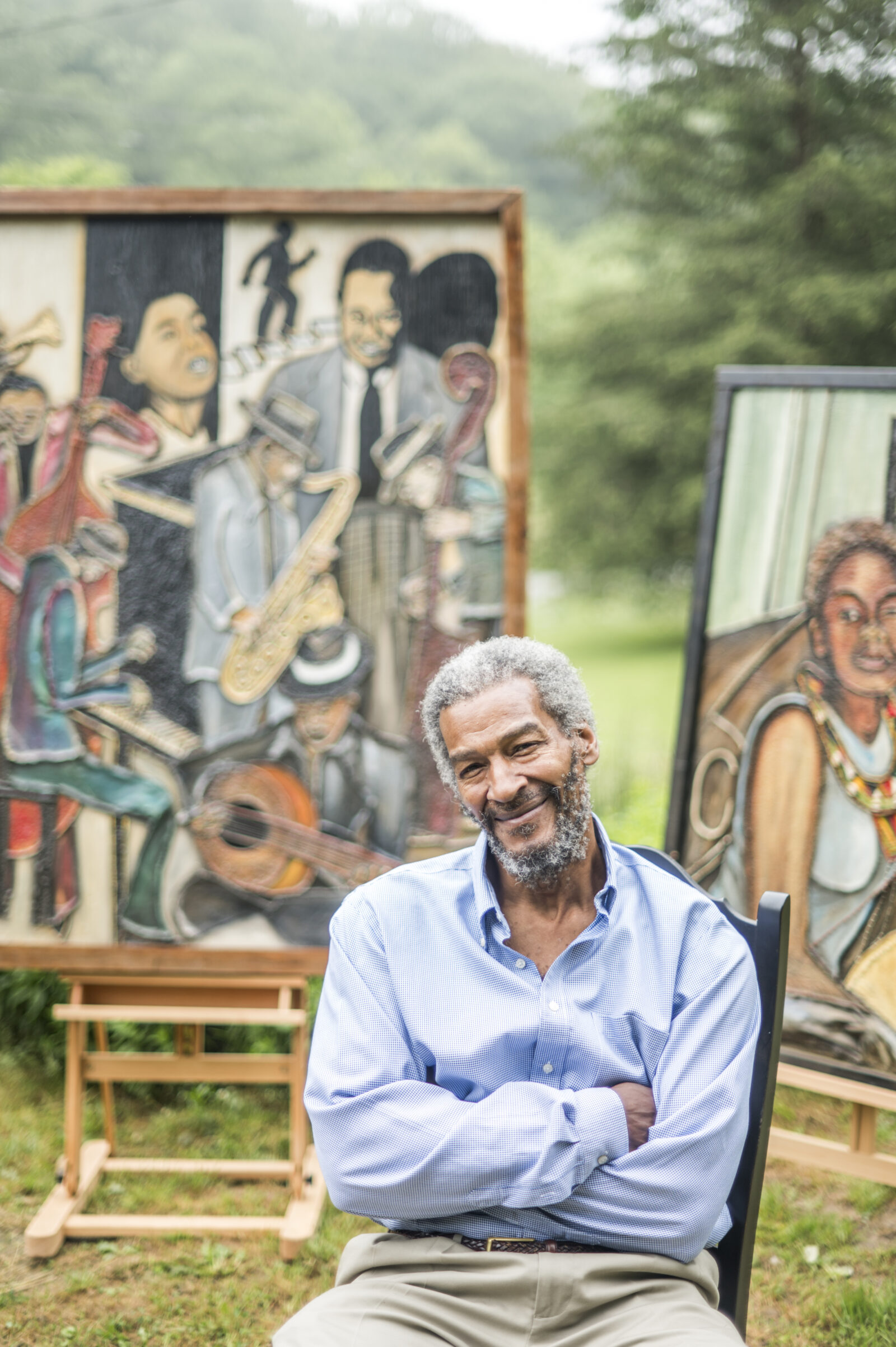
Written by Shayda Windle | Photos by Gracie Savage
A longtime resident of Middleburg, Gary Murray spent much of his childhood playing along the winding creeks and woods of Hunt Country, where he fished in streams and carved wooden figures while waiting for the fish to bite. Here in the foothills of the Blue Ridge Mountains, Murray was first inspired by nature and his imagination blossomed, leading to the creation of many grand, pastoral vistas and landscapes. But childhood for Murray was not always so picturesque, and his art also captures the unsightly and unspoken sides of life: inequality, injustice, and disparities.
Undeterred by life’s trials, including the daunting diagnosis of stomach cancer, Murray persists each day. He maintains a peaceful, resilient outlook on life and a warm smile that is truly infectious. “Everyone is creative. It is everywhere; you need to express it. If you don’t work on it, you’ll get overlooked,” he says. Being passed over isn’t a new experience for Murray. After growing up in foster care, he was adopted by a couple who resided in Middleburg, where he lived as a young child until, at age 12, he and his foster mother moved to Loudoun House, a public housing complex in Leesburg.
Murray’s resourcefulness and creativity gave him solace, peace, and joy while at Loudoun House. He would find and save pieces of materials that looked interesting to him — objects like hangers, cans, wood, or screws — which would later serve as dramatic details for his next masterpiece. “These are just things I get out of the trash,” Murray explains. But to the viewer, the rope becomes grass; a hanger is transformed into guitar strings; old gloves serve as hands in a jazz scene. Viewing Murray’s artwork in person is truly a remarkable experience, as the three-dimensional pieces come to life as sculptures.
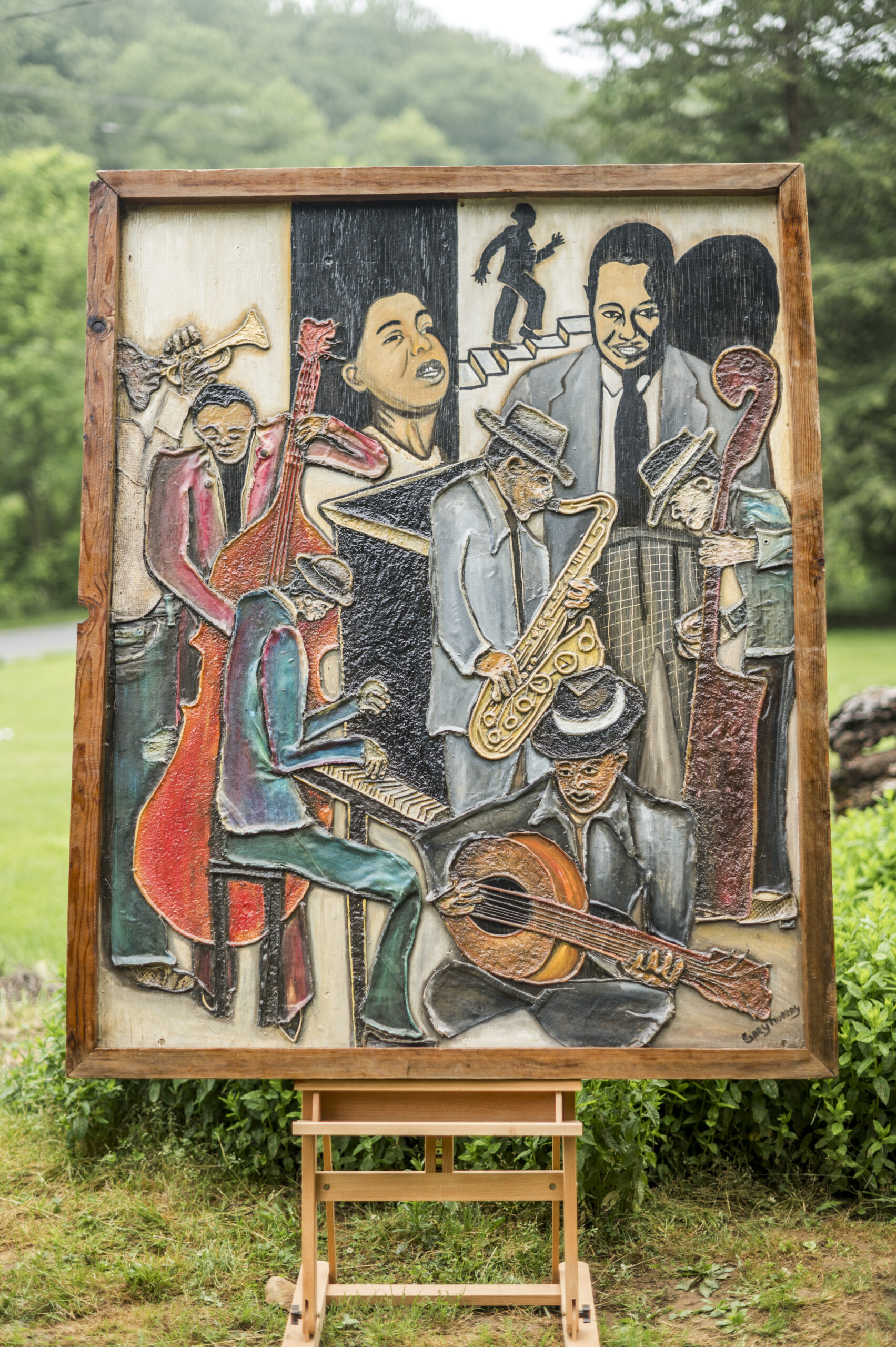
Without direction or much support as a teen, Murray dropped out of Loudoun County High School when he was 15 and started working on construction crews while continuing to hone his artistic craft in his spare time. Despite a childhood of poverty and no formal art education, in the ‘90s Murray earned national acclaim as an artist. His work was featured in exhibitions throughout the country, including the Milton Art Museum in Massachusetts, the Boston Symphony Hall, as well as galleries and public buildings throughout Washington, D.C., Baltimore, Silver Spring, Roanoke, and Loudoun County.
Murray spent the ‘90s in various urban areas, including Boston, New York, parts of California, Leesburg, and Washington, D.C., before settling in Baltimore. There, he purchased a Victorian-style rowhouse with his then wife and invested hundreds of thousands of dollars in renovations with plans to convert it into a cultural museum, classroom, and art gallery. Named The Urban Interior Museum, it was Murray’s lifelong dream: a museum that would be a place for inspiring both young people and aspiring artists. Despite efforts to develop a showcase space for his amazing body of work, the museum never opened due to stringent zoning laws. In a staggering setback, officials ordered Murray to remove all artwork from the walls of his home or risk being fined for selling and showing art out of his house.
In spite of his shattered aspirations for The Urban Interior Museum, he continued to create unique, multifaceted artwork and would exhibit across the D.C.-metro region. In a documentary about Murray’s art and life, co-producer John Weaver told The Washington Post that Murray “never received the recognition he deserved.”
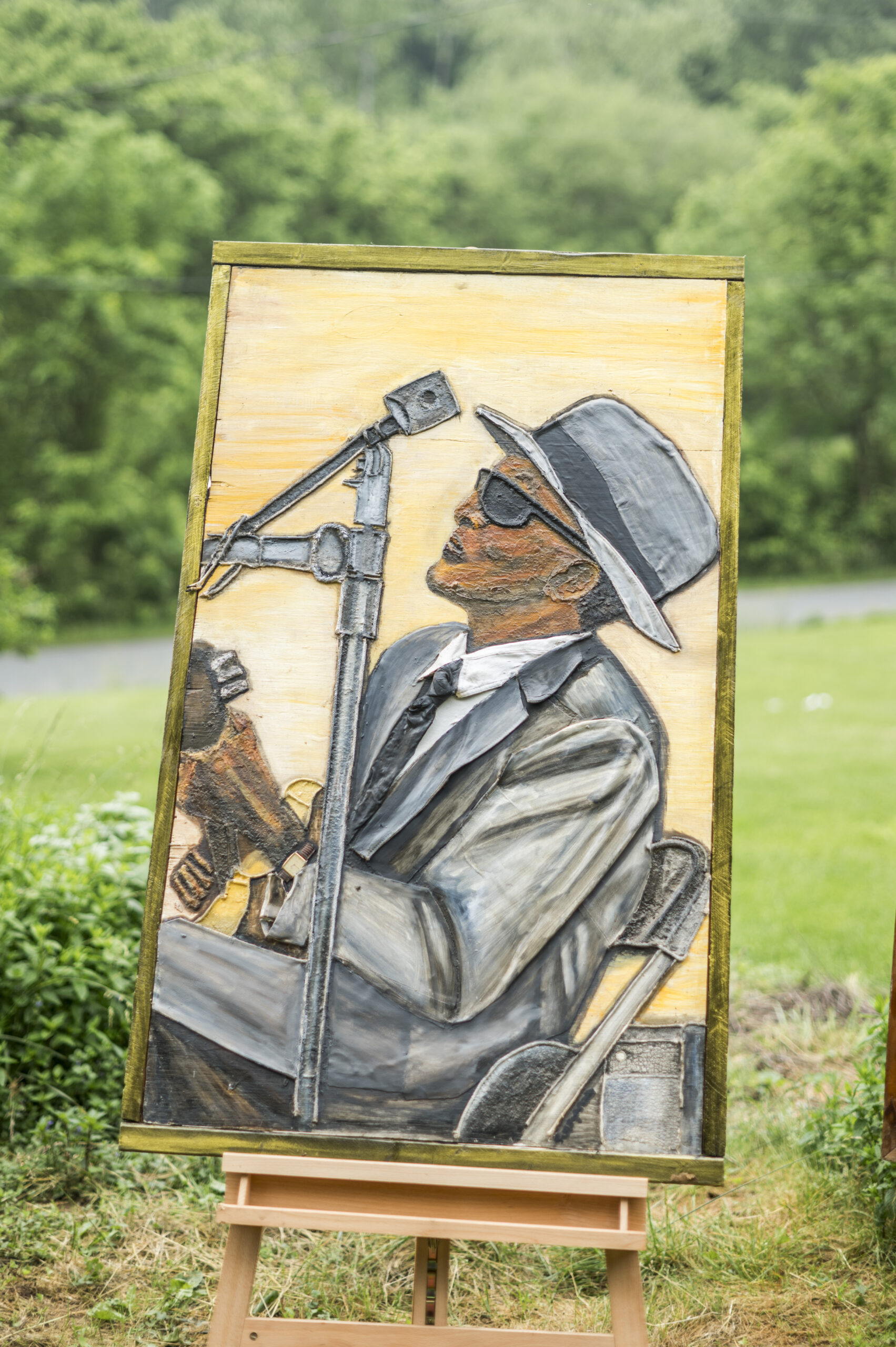
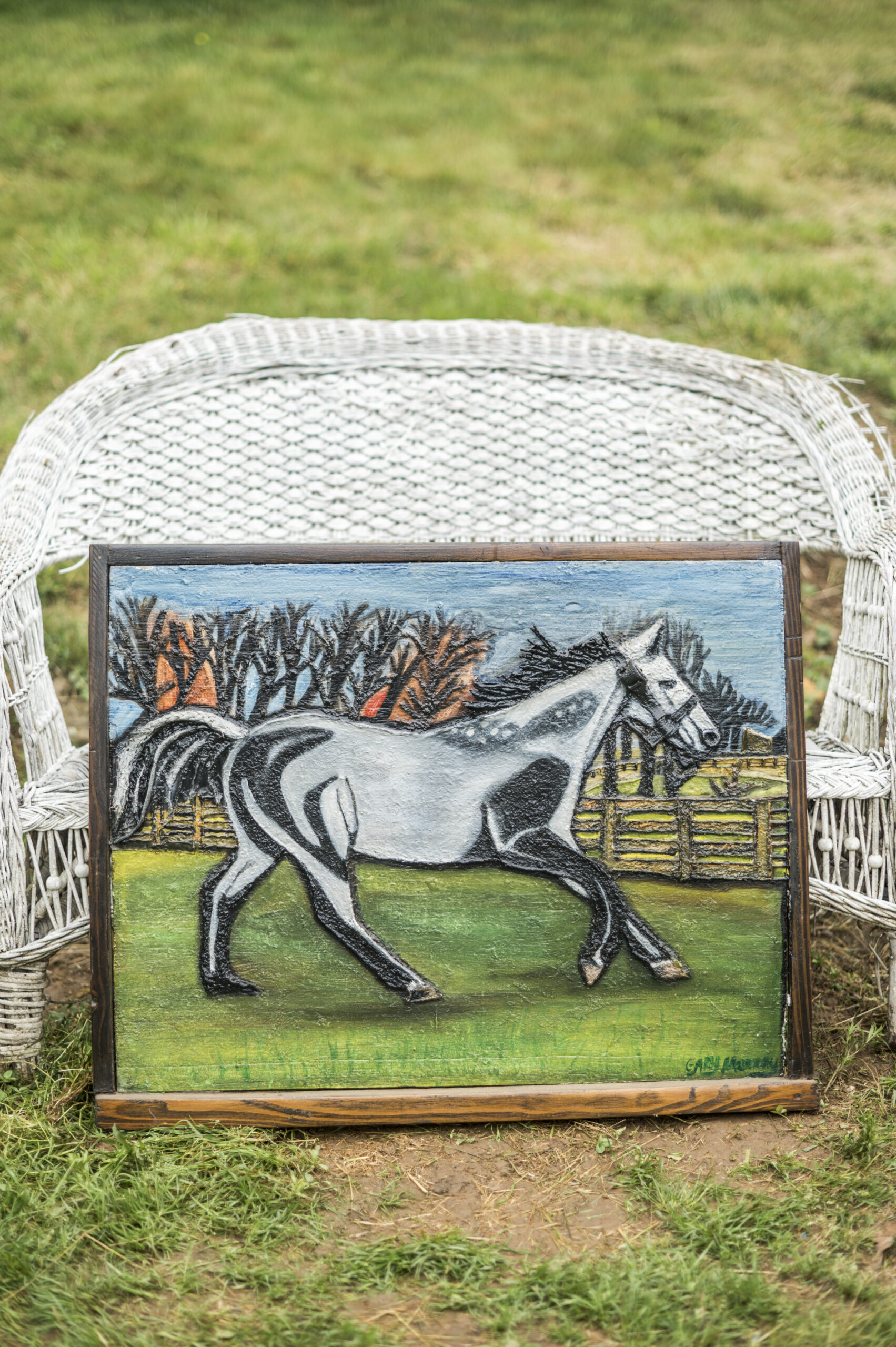
Sadly, in 2012, Murray developed stomach cancer. The prognosis was bleak, with doctors predicting only a few months to live, and he was admitted to hospice care. But Murray refused to accept this fatalistic diagnosis. Drawing deeply on his faith and extraordinary determination, he fought for his life. Upon leaving hospice in Baltimore and returning to California, his health stabilized, and his cancer miraculously went into remission. He continued to paint and further develop his artistic style, and his art evolved with a complex array of symbolism and spiritual messaging, contributing to the profound and eclectic artwork he creates today.
A few years ago, Murray returned to his childhood home in Middleburg to care for his sick father. Shortly after his father passed away, Murray’s cancer returned, making it difficult to work and leading to financial hardship. His current home is without electricity or water, and he has no family or caregivers nearby to support him. Earlier this year, he found himself in need of assistance and contacted Tree of Life Ministries in Purcellville. Tree of Life volunteers went to visit Murray to deliver food. In his home, they discovered a large body of extraordinary artwork. Volunteer Susanne Horn has joined Murray in his recent journey, seeking opportunities to have his art displayed throughout Loudoun County.
“It’s a blessing and honor to be able to help Gary,” Horn shares. “I was awestruck by the artwork we found when we first met him. He radiates a type of kindness, warmth, and peacefulness that is captivating. Gary’s life story is inspiring beyond measure and needs to be told. I would like to help him get the recognition and applause he deserves.”
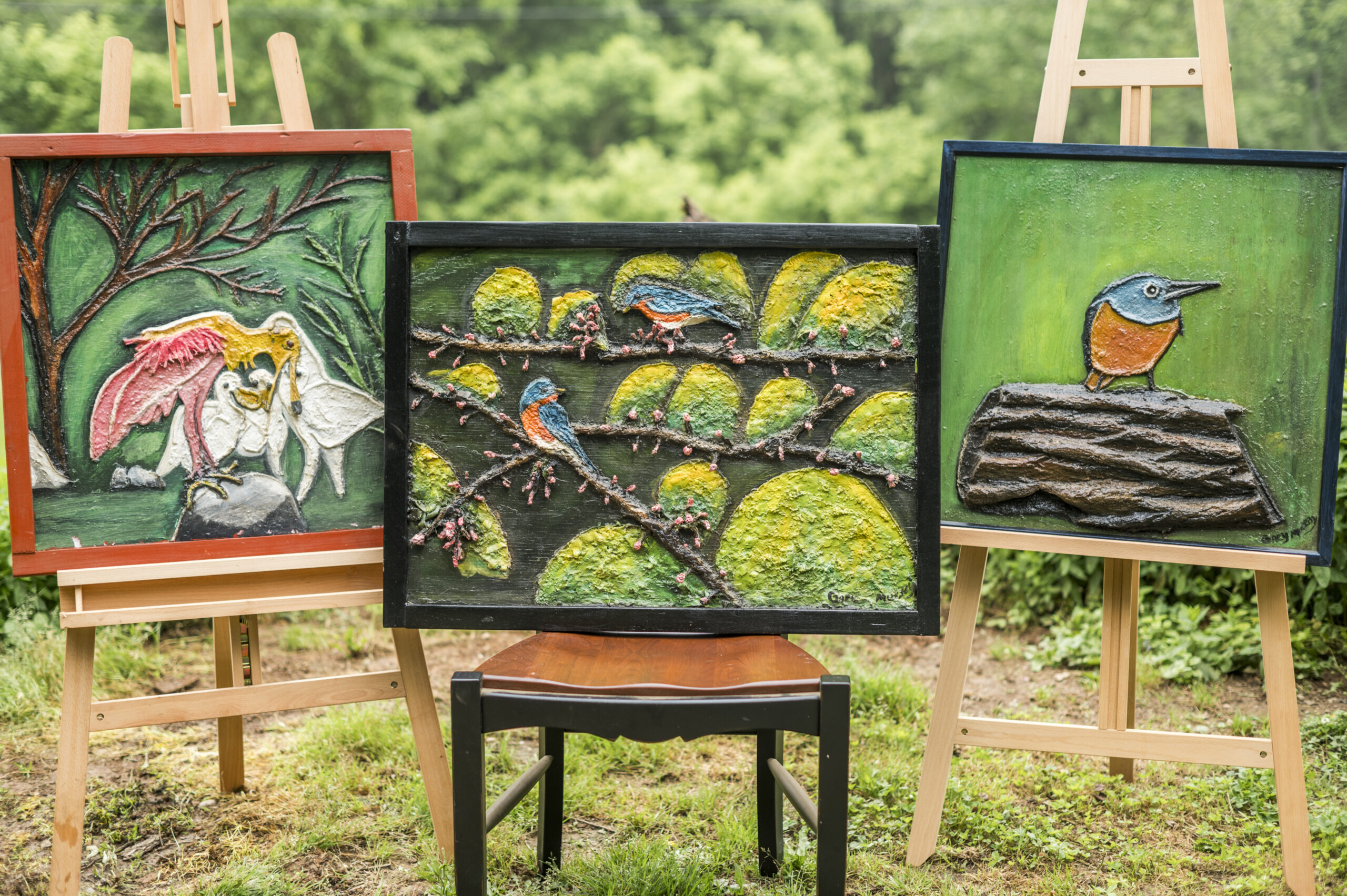
With Horn’s help, Murray’s art has been exhibited at the Leesburg Town Hall and the Loudoun County Visitor Center. There has been so much interest in his artwork that volunteers and staff at Tree of Life are working on an exhibit for Murray this coming June at SimplyBe Coffee, a gospel enterprise of Tree of Life. Murray will have several works on display and an artist’s reception with the date to be determined depending on his health.
When asked about Murray’s art, Horn reflects, “The viewer becomes captivated by the rich colors and forms which tell a story that continuously unfolds… He brilliantly captures the pathos of the subject, painting emotive facial expressions and powerful backgrounds that speak volumes. One gets easily swept away by the extraordinary images memorialized in Murray’s art.”
Murray’s passion, dedication, and perseverance serve as reminders that even during the darkest and toughest moments, a person can leave a positive and enduring mark on this world. As the artist himself says, “The greatest form of expression that people can leave behind is art.” ML
Follow along at tolministries.org/event/gary-murray-artist-reception for updates on the artist’s reception.
Published in the June 2024 issue of Middleburg Life.








